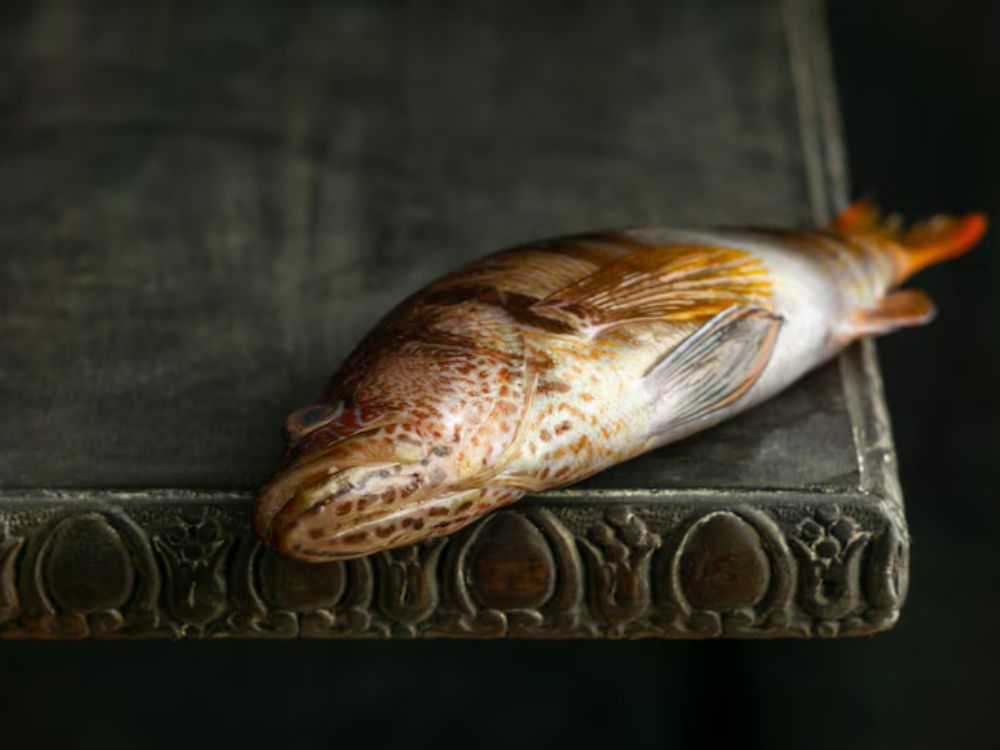If you’re someone who loves to keep aquariums, you’ve probably heard of the lace catfish. Known for its graceful appearance, peaceful nature, and fascinating behavior, this fish is a favorite among hobbyists. Whether you’re just getting started or expanding your tank family, the lace catfish (also known as Synodontis nigrita) is a wonderful addition to consider.
In this comprehensive guide, we’ll walk you through everything you need to know about the lace catfish—from what makes it special to how to care for it, and even where to buy one with confidence.
What Is a Lace Catfish?
The lace catfish is a stunning freshwater fish that belongs to the Mochokidae family. It originates from various parts of West and Central Africa, especially the Congo River Basin. What makes it stand out is its beautifully patterned, lace-like body design that gives the fish its name.
With its distinct spotted skin, long whisker-like barbels, and elegant movement, it adds both character and beauty to any aquarium.
🔗 Learn more about lace catfish from Seriously Fish
Lace Catfish Characteristics
Here are some quick facts to help you get to know your potential new aquatic friend:
Feature Details
Scientific Name Synodontis nigrita
Common Name Lace Catfish
Size 6 to 8 inches (15-20 cm)
Lifespan 8 to 10 years (with proper care)
Temperament Peaceful, shy
Tank Level Bottom-dweller
Compatibility Excellent in community tanks
Why Fishkeepers Love the Lace Catfish
Let’s take a moment to share a story.
A friend of mine named Sarah had just set up her 40-gallon aquarium. She wanted something calm, graceful, and low-maintenance to balance out her active tetras. A local pet shop owner recommended a lace catfish. The moment Sarah added it to her tank, she noticed an instant shift in atmosphere—the fish floated gently, explored nooks and crannies, and brought a soothing vibe to the tank.
Today, Sarah swears it’s her favorite fish, and she even named it “Silky.”
That’s the kind of experience you can expect. This fish isn’t just easy to care for—it’s also rewarding to observe.
Ideal Tank Setup for a Lace Catfish
Creating the right home for your lace catfish is essential for its health and happiness.
Step-by-Step Tank Setup:
Tank Size
Minimum of 30 gallons. They love to roam, so more space is better.
Water Parameters
Temperature: 72–82°F (22–28°C)
pH: 6.0–7.5
Water Hardness: Moderate
Substrate
Use soft sand or smooth gravel. Their underbellies are sensitive, so avoid sharp or jagged rocks.
Decorations & Hiding Spots
Add driftwood, caves, or PVC pipes. These fish are shy and love to hide.
Plants
Use low-light plants like Java Fern or Anubias. The lace catfish won’t eat them but will love the cover they provide.
Filtration
Use a strong yet gentle canister filter. These fish need clean water but don’t enjoy strong currents.
Lighting
Keep it soft. You can use floating plants to diffuse the light further.
🔗 Recommended substrate types
What Do Lace Catfish Eat?
In the wild, lace catfish are scavengers. They eat insects, larvae, detritus, and algae. In captivity, they’re just as easy-going.
Diet Recommendations:
Sinking pellets or wafers (for bottom-feeders)
Frozen or live foods like bloodworms and brine shrimp
Blanched vegetables like zucchini or spinach
Occasional treats like crushed snails
🔗 Best sinking foods for catfish
Pro Tip: Feed them at night or when the lights are dim. They’re more active and confident then.
Tank Mates for the Lace Catfish
Because they’re peaceful, lace catfish do well in community tanks. They get along with:
Tetras
Guppies
Corydoras
Gouramis
Angelfish (with caution)
Avoid aggressive or territorial fish like cichlids or large barbs.
🔗 Guide to peaceful freshwater fish
Care and Maintenance Tips
Keeping your lace catfish healthy isn’t difficult, but a few key things matter:
Do weekly water changes (25-30%)
Test water regularly to avoid ammonia spikes
Clean the substrate without disturbing hiding areas
Observe for signs of illness like bloated bellies, cloudy eyes, or erratic swimming
How to test aquarium water
Breeding Lace Catfish: Is It Possible?
Breeding lace catfish in home aquariums is quite rare. They require specific conditions and hormone treatments typically available only in commercial breeding farms.
However, if you’re passionate and patient, you might spot signs like:
Increased hiding
Males chasing females
Egg-laying in caves
If you’re serious, you’ll want to consult with advanced aquarists or professionals.
🔗 Learn about Synodontis breeding
Buying a Lace Catfish: What to Know
When purchasing a lace catfish, look for:
Clear eyes and active movement
Healthy body (no spots or fin tears)
Reputable sellers—either local fish stores or trusted online retailers
Trusted Places to Buy
LiveAquaria
AquariumFish.net
Local aquatic stores with good reviews
Prices usually range from $8 to $20, depending on size and source.
Why You Should Get a Lace Catfish Still on the fence?
Let’s recap:
Visually stunning fish that adds elegance
Peaceful personality, perfect for community tanks
Easy to feed and maintain
Long lifespan with proper care
Ideal for beginners and seasoned hobbyists alike
A lace catfish isn’t just a pet—it’s a beautiful living being that can become the calm centerpiece of your aquatic world.
Final Thoughts
Whether you’re starting a new tank or just looking for that perfect addition, the lace catfish is a fantastic choice. Its graceful movements, peaceful nature, and low-maintenance care make it ideal for almost any fishkeeper.



































